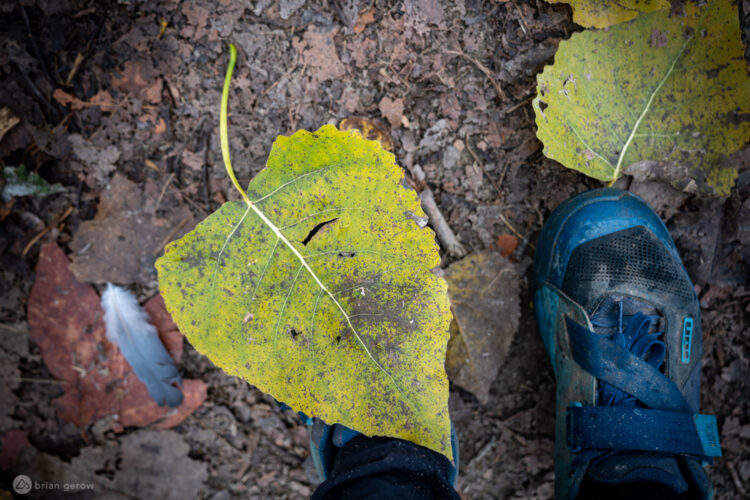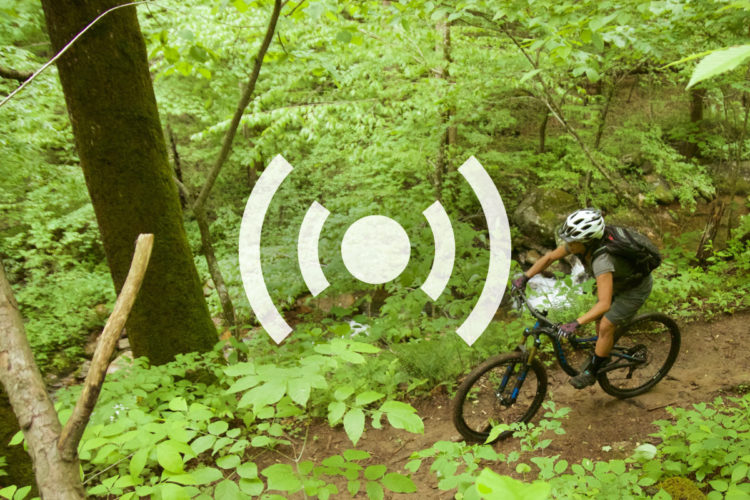
Dirt riders often cite the quiet and beautiful nature of the forest as one reason they love to mountain bike. On singletrack, we get to trade the cacophonic pang of contemporary urban life for the scent of dirt and sap. Many of us find meditation in the pedal strokes, spooky cliffs, hanging on, pushing deep, and playing young, which leaves no space to be anything other than present.
The natural world that curates those experiences is something I enjoy learning about between rides, as it deepens my appreciation for and connection to my favorite things. I want to share some of my lay-research here, with the hope it will inspire readers to learn more about the natural world that lines our singletrack trails. I will start with a fall favorite, found atop mountains in the northern hemisphere.
Larch (Genus: Larix)
September trails grow louder, carpeted by brittle leaves. Many forests in the northern hemisphere turn at the beginning of autumn as deciduous trees (leaf-shedding) show the world where they stand.
Larch is one of only six coniferous trees that drop their leaves in autumn to grow anew each spring. In total, fifteen tree species are huddled under the Larch banner. Each of these species shares the definitive characteristics of 30-40 tightly clumped leaves/needles that light up vividly green in spring, but disappear in autumn, leaving the Larch naked through the winter months.

Habitat
Due to their tolerance for a diversity of soils and propensity for cooler, temperate climates, Larch is among the most northern growing species of trees, covering the northern forests of Europe, Siberia, China, North America, and Japan. They are rarely found in pure stands, more typically growing among a natural variety of trees including pines, hemlock, and cedar, though the variation of their neighbors depends greatly on geographic location. Growth altitudes range from 500-1,700 meters, where the trees can be found on mountain slopes and scattered throughout valleys.
Western Larch, in particular, is highly fire-resistant, protecting its cambium layer with the same basil bark that allows it to endure winter temperatures down to -57°C.

Animal and human uses
Immature cones and buds provide an important source of food for squirrels, rabbits, and birds. Alongside colonies of insects and bacteria, these same animals make their nests in Larch trees.
Native cultures around the world have used parts of the tree for construction, medicine, and ritualistic practices for centuries. The name of the Tamarack species, also known as Eastern or American Larch, comes from an Algonquin word, akemantak, meaning “wood used for snowshoes.”
In addition to snowshoe production, the wood from Larch trees is both hard and strong, providing a fantastic building material for a variety of uses. The piles that hold the city of Venice, Italy above its saltwater base are made almost exclusively of Larch. Other contemporary manufacturing uses for Larch trunks include coffins, building materials, telephone poles, railroad ties, fences, furniture, and boats.

How to Identify a Larch
- 30-40 needles emanate from short stems in a whirled-cluster needle pattern, alternately bunched along the branch
- Needles 2-5cm long, under 1cm wide
- Short, multilayered cones, red to dark brown depending on cone age, egg or oval shaped
- Twisting habit
- Deciduous
- Identification video

Vignette
A dear friend of mine, who owns a wildland firefighting company in southern Oregon, once asked me if I could identify the Larch in his backyard. He had just moved into a new home and wanted to know more about the tree including when the needles would fall into the swimming pool below. I took a quick look at the towering tree and then busted out a species guide to share some tips on how to identify trees because this was no Larch, but a massive Atlas Cedar. The takeaway: even folks who work in nature can learn more about the flora that surrounds us.
Are there trees in your area that you find particularly interesting, or would like to learn more about? Please share any intriguing information or stories about your local flora or fauna in the comments below.
Note: Information in this article was collected from various sources including arborday.org, for.gov.bc.ca, and fs.fed.us.



















